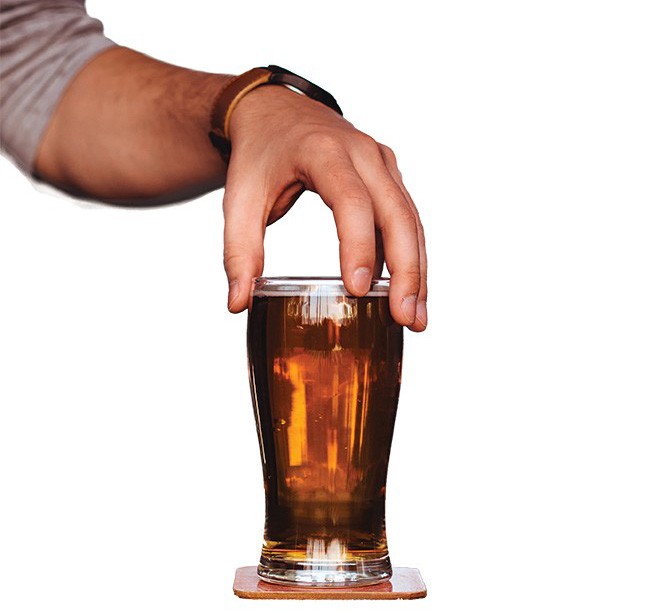
As is the case with so many topics in our 10-tweets-a-minute hyperbolic culture, there's a lot of misinformation and myth out and about concerning beer and brewing. So, with an eye toward ensuring your ultimate enjoyment of this weekend's seventh annual City Weekly Utah Beer Festival, we're here to help set the record straight about the suds.
Bitter beer is bad. Wrong. Bad beer is bad. Remember those TV ads from the mid-'90s showing beer drinkers with "bitter beer face"? Those were ads for one of the bad ones: Keystone Light. Bitter hops make delicious brews like India pale ale great. But Budweiser and other gargantuan brands would have you think that bitter is for wimps and, you know, intellectuals.
Beer is best ice-cold. Again, wrong. But so are the folks who say that it should be served "warm," like the Brits do it. Crappy beer should be ice-cold; that's because the colder it is, the more the flaws and defects in the poorly made varieties are hidden. The same is true for wine. Depending upon the style, most beer should be consumed between 38-55 degrees Fahrenheit, according to the American Homebrewers Association. Pale lagers and pilsners should be enjoyed fairly cold, while at the other end of the temperature spectrum—around 50-55 degrees—strong lagers, cask ales and Belgian dubbels are better a bit warmer. By the way, although the English get a rap for serving warm, most U.K. session beers are served at cellar temperature, between 50-57 degrees—not ice-cold, but definitely not warm, either.
Homebrewing saves you money. OK, I'll argue both sides of this common belief. Initially, homebrewing will not save you money. It's true that you can get a basic homebrew system for around $80. But that's for the essential equipment and doesn't include the ingredients. Realistically, you're going to want to spend about $220—in fact, that's the price of The Beer Nut's "Complete Home Brewing System," and it includes everything from the glass carboy and fermenter to bottles, brushes (for cleaning), racking cane, bottle capper, thermometer and more than a dozen other items you'll need to brew good beer at home. Additionally, the ingredients for your first batch—malt, hops, grains, etc.—will run a minimum of $30 or so. A standard batch of homebrew makes about eight six-packs. Do the math and you'll find that your first homemade bottle will cost you in the vicinity of $5. That's hardly a bargain. However, the good news is that with your next batch, you'll only be paying for the ingredients, bottle caps and bottles (if you haven't recycled), plus your time, of course. So making beer at home can save you money, but I wouldn't get into it for that reason only. The reason to brew at home is the enjoyment, and to be able to create something that's truly unique and yours alone.
Lagers are light and wimpy. Incorrect. Serious beer aficionados love their lagers. They are time-consuming and labor-intensive to make, and a good German- or Czech-style lager is a work of art. Don't be conned into thinking only the "powerful" varieties are worth your while.
Dark beers are high in alcohol. I wish I had a beer for every time someone has told me that Guinness is high in alcohol. In fact, most of the Guinness draft beer sold in Ireland (and in Utah) is 4.2 percent alcohol by volume. That's hardly a boozy brew.
Enjoy the beer fest!